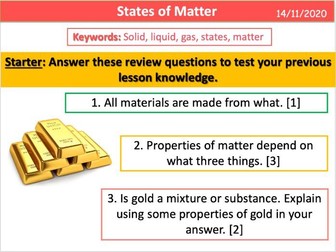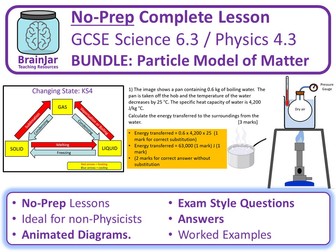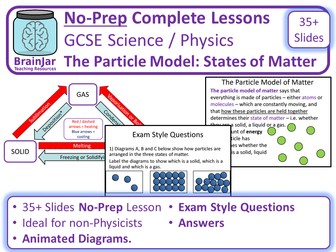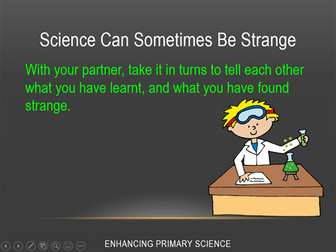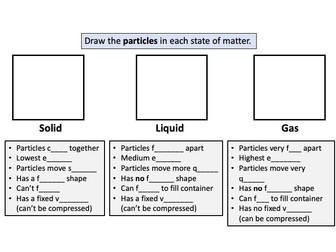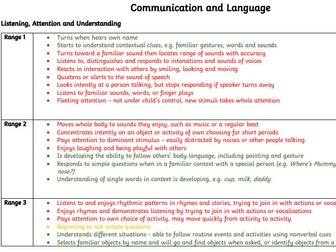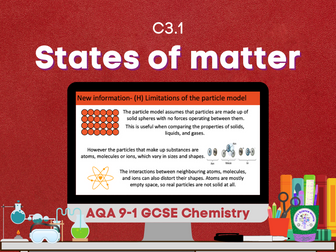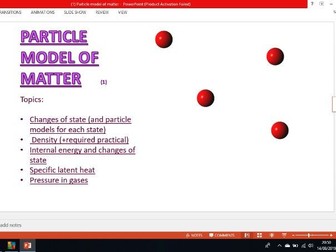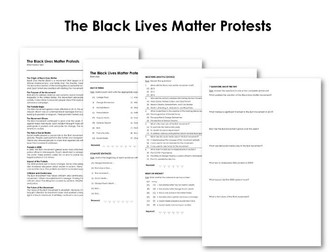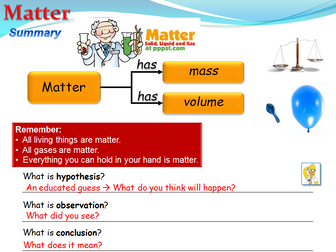
States of Matter
KS3 new for the Activate 1 unit ‘Particles and their Behaviour’.
Full lesson ready to use straight ‘out of the box’.
Similar structure to my other power points following the input - activity - review phasing
plenary sections for progress checking
Clear learning objectives and outcomes
Modern and engaging layout
Little adaptation needed
Covers an hour lesson of content matched to the specification
31 ppt slides
Please give constructive feedback :D
